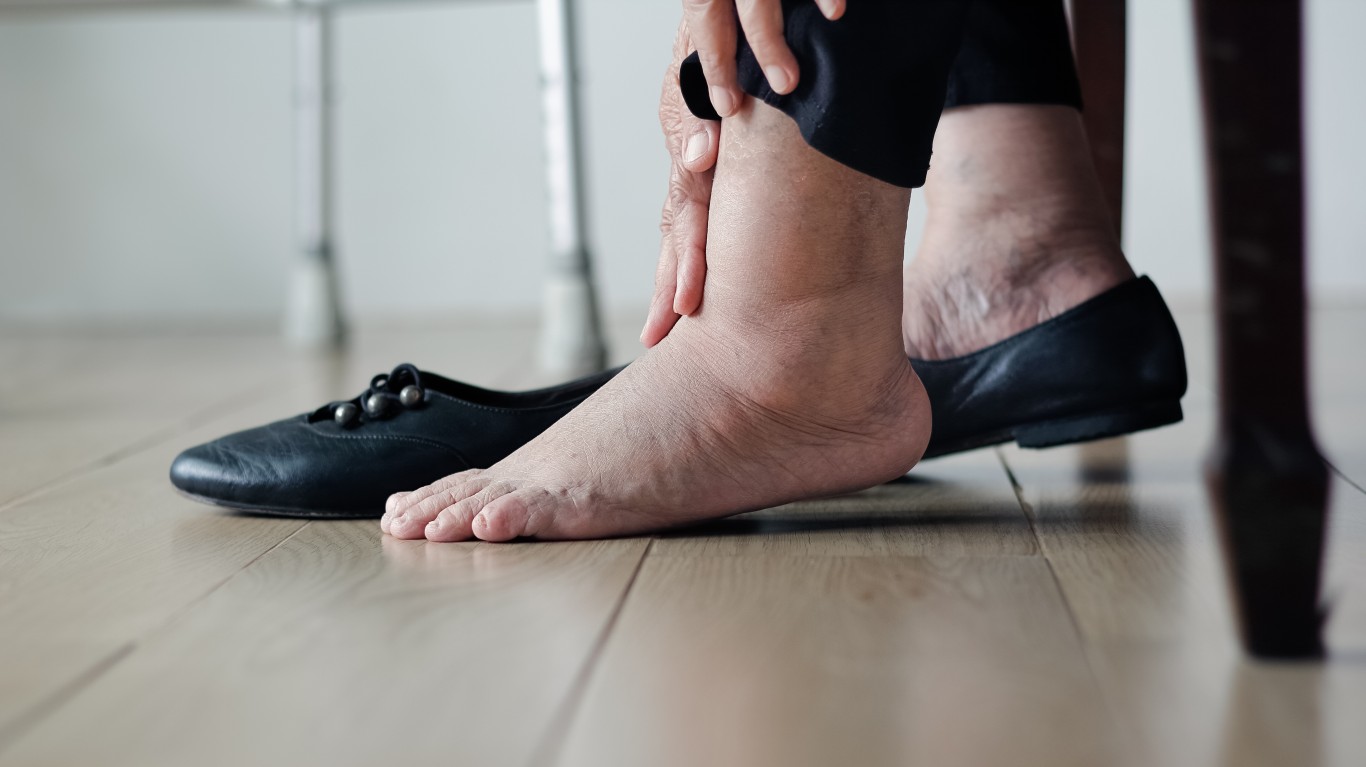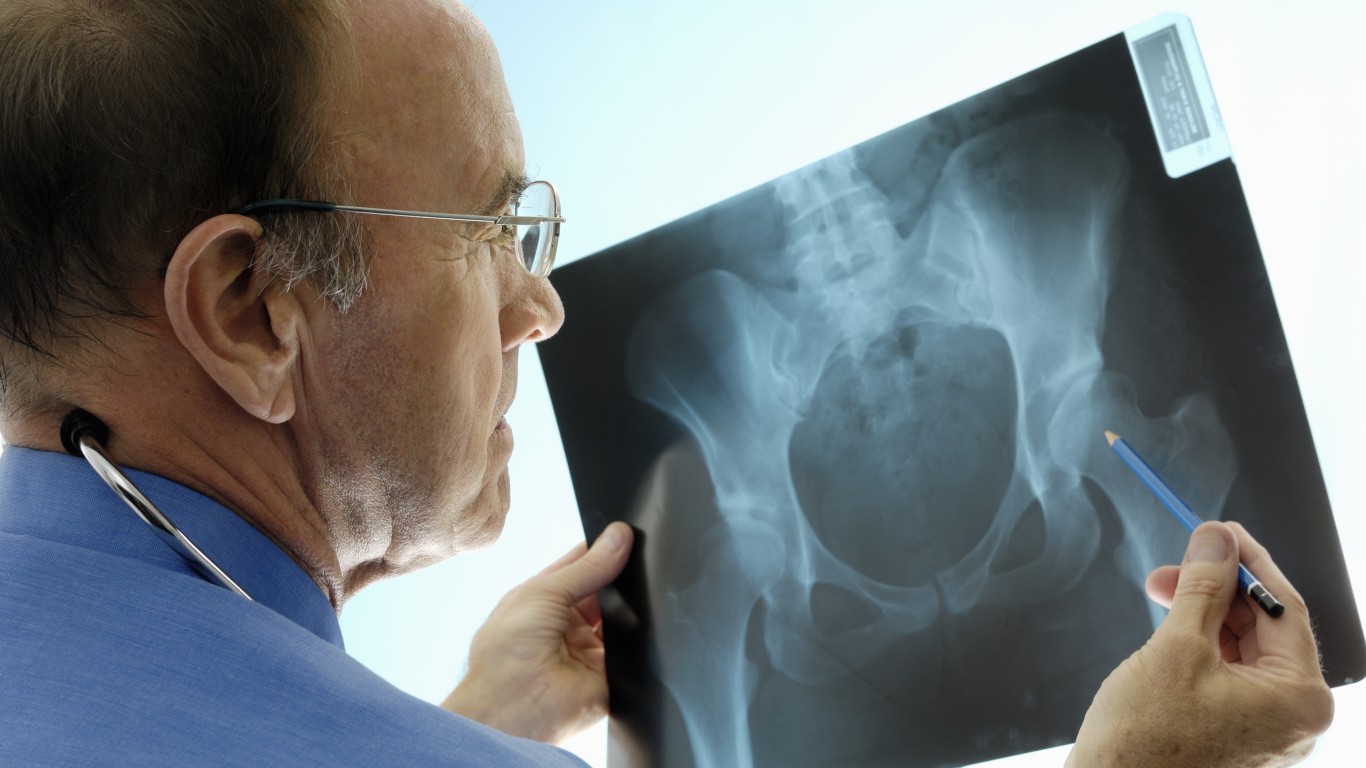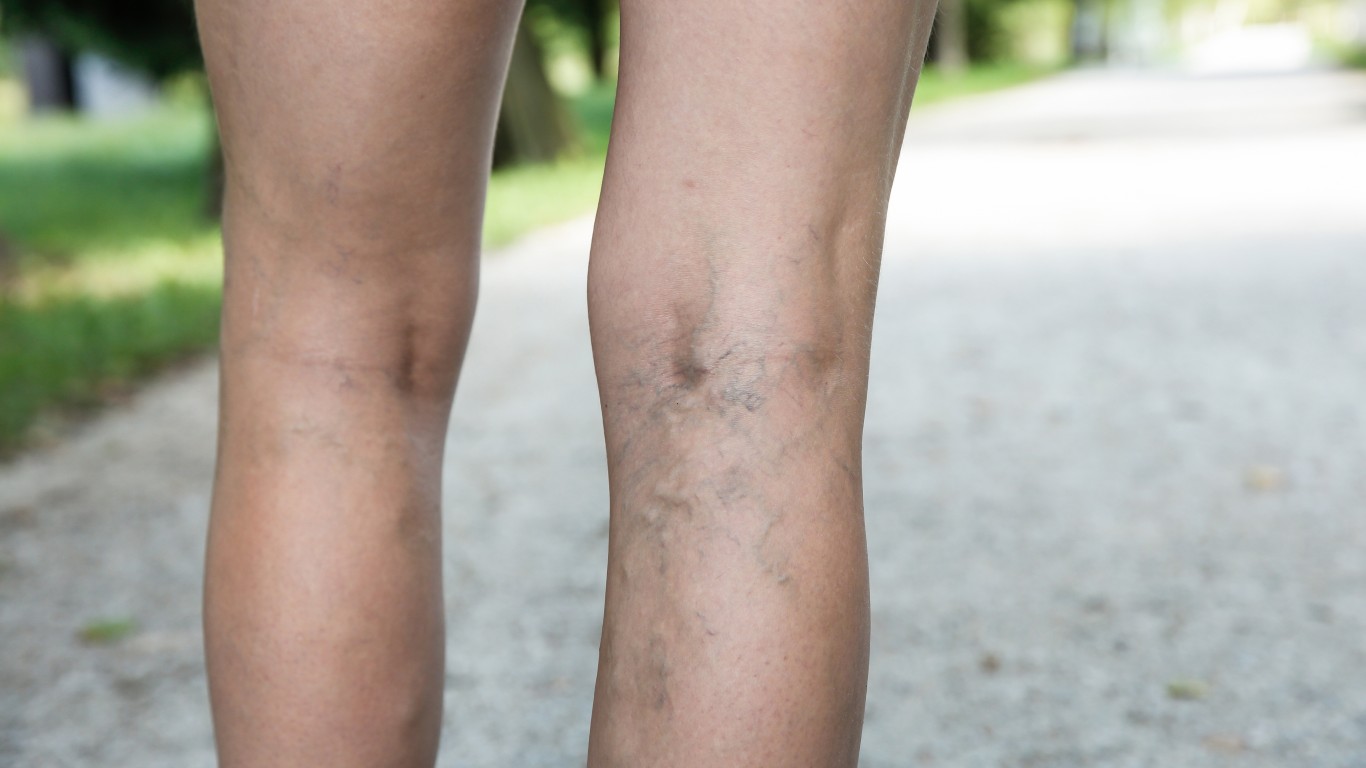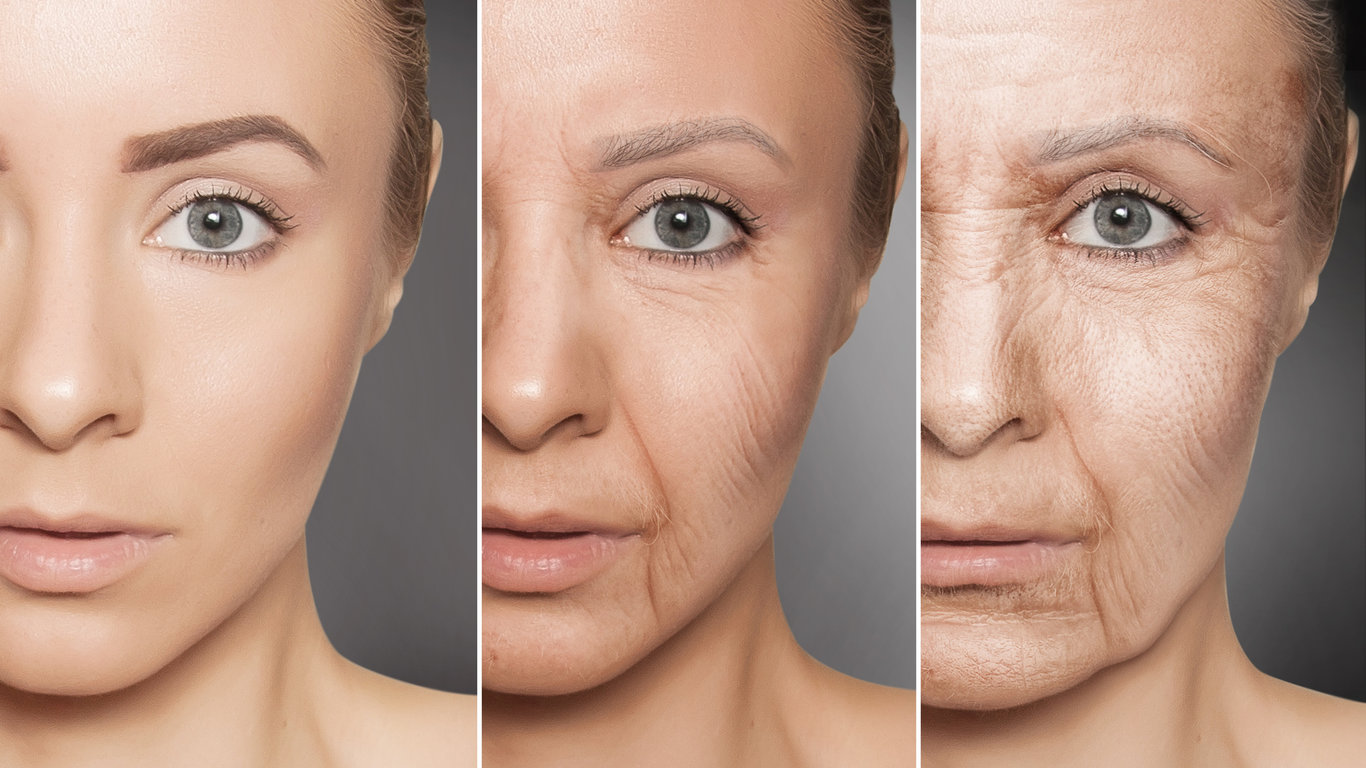
You’ve probably heard it before — sitting is the new smoking. But while smoking rates are declining, sedentary behaviors are only increasing. The average adult person spends more than half of his or her waking hours sitting, about 70%, according to research published in Mayo Clinic Proceedings.
24/7 Tempo reviewed several medical sources, including National Health Institutes, to compile a list of at least 17 ways prolonged sitting can be bad for you.
Even if you are meeting daily recommendations for sleep (about eight hours a day) and staying physically active (about an hour a day) there are still 15-16 hours a day when you could be active. You probably spent half of that time at work, which often involves sitting at a desk.
The problem is that, according to several studies, regardless of whether you’re exercising for about an hour a day, how you spend those 15-16 hours matters significantly. And if you spend them sitting, working out an hour or so a day may not be able to offset the damage you’re doing to your health.
Most people know that sitting all day long is not a healthy habit, but many may not be aware of the dire consequences that may come with a sedentary lifestyle. Just like they may not be aware of certain “harmless” habits that are aging them much faster than they can imagine.
While you may not be able to control your work environment, there are ways to minimize the damage even when your work involves sitting at a desk, including standing and stretching intermittently. And if you can avoid additional sitting at home (such as spending hours in front of the TV), you’re certainly ahead.
Click here to see the 17 ways in sitting too much is ruining your body
To determine the ways in which uninterrupted sitting for long periods of time is causing damage to physical and mental health, 24/7 Tempo reviewed several sources, including the Centers for Disease Control and Prevention and National Health Institutes as well as several medical schools.

1. Blood clots in the legs
Prolonged sitting can lead to a blood clot in the veins of the lower legs or thighs. This condition, called deep vein thrombosis, can be very dangerous if the clot breaks loose and travels to the heart or lungs.
[in-text-ad]

2. Lower cross syndrome
Sitting all day may lead to lower cross syndrome, also known as gluteal amnesia or gluteus medius tendinosis, and sometimes called “dead butt” syndrome. Prolonged periods of sitting and not moving throughout the day may lead to the glute muscles loosening and the hip flexors muscles tightening up, which may cause strains. As a result, hip and lower back pain is possible, as is numbness due to compressed and pinched nerves.

3. Premature aging
Some people may experience no obvious consequences from sitting all day — no pain, no hip problems, and no weight gain. But a closer look may prove them wrong. Research shows a connection between prolonged sitting and premature aging — body cells simply age faster when people sit too much. In the study, published in the American Journal of Epidemiology, women who were sedentary for most of the day — more than 10 hours at least — had cells that appeared 8 years older than the women’s actual age.

4. Muscle loss
The longer a person sits, the more taxing sitting becomes for the body. Over time, chronic and prolonged periods of sitting may cause nerve damage and muscle loss due to prolonged restricted movement. Pinched nerves are most often felt in the lower back.
[in-text-ad-2]

5. Reduced blood flow
Sitting for a long period of time without getting up to move around may lead to blood pooling in the bottom of the legs and feet. The reduced blood flow means that parts of the body are not getting enough oxygen, which can lead to pain, tingling, and numbness.

6. Osteoporosis
A sedentary lifestyle can increase the risk of developing osteoporosis. Research has found that physical activity, especially weight exercises that improve balance and posture, increases growth and mineral content of bones in women throughout their lives. The ideal exercise to keep the bones strong should be dynamic, brief but intermittent, and exceed threshold intensity.
[in-text-ad]

7. Hip problems
Sitting for too long, as well as keeping your legs crossed for a prolonged period of time, may cause the muscles to tighten, possibly leading to pain at the side of the hips. Musculoskeletal complaints are prevalent in the general population, especially in women, and, according to one study, about 15% of older adults complain of significant hip pain on most days.

8. Cancer
Spending too much of your time sitting is linked to an increased risk of developing colon, endometrial, and lung cancer, according to a 2014 study published in the Journal of the National Cancer Institute. Moreover, the study suggests exercising may not offset the increased risk of prolonged sitting as much as believed.

9. Depression
A study of about 9,000 women in their 50s found that those who sat for seven hours a day and didn’t exercise were three times more likely to experience depression symptoms than the women who sat for fewer than four hours and engaged in at least the recommended amount of daily physical activity. It’s important to note that this is not necessarily a cause and effect relationship. People who suffer from depression often report low levels of energy and no motivation to exercise. In other words, while sitting too much may be making depression worse, depression is itself a hindrance to getting up and moving around.
[in-text-ad-2]

10. Bad posture
It’s difficult to maintain a good posture when you sit for hours at a time. No matter how much we try, we tend to slouch and slump at some point. And before we know it, we slouch when we stand and walk. Slouching and slumping may result in muscle tension and tightness and eventually in back pain. The correct posture resembles a straight line passing through your body from your shoulders to your toes.

11. Heart disease
Sitting is rather pleasant — you’re just relaxing and resting your body. But sitting too much may be slowly ruining your heart. Prolonged sitting has been linked to cardiovascular disease by several studies. Prolonged sitting begins a cycle of bad effects for the body, one of them is poor circulation, which may lead to fatty acid buildup in the blood vessels, increasing the risk for heart disease.
[in-text-ad]

12. Premature death
While links have been found between sitting too much and specific diseases and conditions, some research suggests a sedentary lifestyle can lead to premature death. A 2018 study from the American Cancer Society published in the American Journal of Epidemiology found a link between sitting for more than six hours a day and a 19% increased risk of death from “all causes.” The research looked at more than 127,000 healthy people, following them for more than two decades. About 49,000 of them died in that time. Those who reported more time spent sitting had a higher risk of dying from cancer, coronary heart disease, stroke, diabetes, kidney disease, suicide, lung disease, liver disease, peptic ulcer and other digestive disease, Parkinson’s disease, Alzheimer’s disease, nervous disorders, and musculoskeletal disorders.

13. Varicose veins
Enlarged and twisted veins, commonly known as varicose veins, can form anywhere in the body, but they are most common in the legs. Varicose veins form as a result of increased pressure, caused by pooled blood in the veins, which can happen after a person has been sitting or standing for too long. The increased pressure may stretch the veins, weakening their walls and damaging their valves.

14. Alzheimer’s disease
It is well established that being physically active may reduce the risk of developing dementia later in life. One preliminary study conducted by the Center for Cognitive Neurosciences, UCLA, researchers on sedentary behavior and dementia risk, independent from exercise and other physical activities, showed that long hours of sitting is linked to thinning of the medial temporal lobe (MTL), which is critical for memory formation. Research published in Brain, a Journal of Neurology, has linked the thinning of brain structures with Alzhehimer’s disease, which is the most common form of dementia.
[in-text-ad-2]

15. Slower brain function
Sitting for many hours at a time without getting up and moving can slow down blood flow to the brain, and the reduced blood flow is associated with lower cognitive functioning. This can easily be prevented with short but frequent breaks to take a walk or do some other physical activity.

16. Diabetes
A 2015 study published in Annals of Internal Medicine found higher rates of type 2 diabetes in sedentary people. The exact connection between the two is not clear to doctors, but one theory is that sitting too much can affect sugar levels and fat metabolism negatively. Some doctors recommend that people in general stand up for about two minutes every 20 minutes or so to stretch and move around.
[in-text-ad]

17. Obesity
We are using a lot less energy when we sit than when we move or even stand, and this can lead to weight gain. Many studies have established a connection between obesity and sedentary lifestyle, mostly sitting and watching TV. The more time adults spend in front of a TV, the more likely they are to become overweight or obese. One study found that for every two hours women spent watching TV daily, they had a 23% higher risk of becoming obese and a 14% higher risk of developing diabetes.
Travel Cards Are Getting Too Good To Ignore (sponsored)
Credit card companies are pulling out all the stops, with the issuers are offering insane travel rewards and perks.
We’re talking huge sign-up bonuses, points on every purchase, and benefits like lounge access, travel credits, and free hotel nights. For travelers, these rewards can add up to thousands of dollars in flights, upgrades, and luxury experiences every year.
It’s like getting paid to travel — and it’s available to qualified borrowers who know where to look.
We’ve rounded up some of the best travel credit cards on the market. Click here to see the list. Don’t miss these offers — they won’t be this good forever.
Thank you for reading! Have some feedback for us?
Contact the 24/7 Wall St. editorial team.
 24/7 Wall St.
24/7 Wall St. 24/7 Wall St.
24/7 Wall St.
